Companies
The history of La Ribera de Deusto and Zorrotzaurre stands out for the large number of companies that have been located for many years in the island. Small workshops, medium-sized companies, and emblematic multinationals such as Relax, Artiach, Vicinay Cadenas or Toldos Goyoaga among others, found their headquarters in the area.
The great splendor of both neighborhoods arrived with industrialization, and the amount of people living and working there grew. Little by little, due to the crisis and changes in their activities, the companies moved to other places transforming the panorama completely. The workshops disappeared leaving empty or underused spaces and little traveled streets.
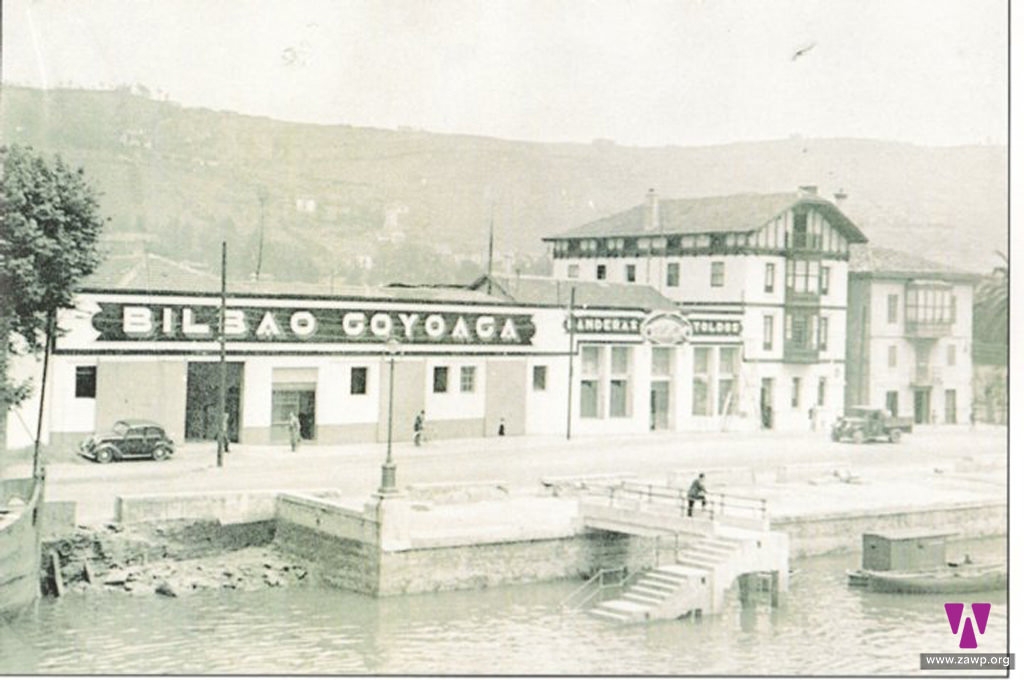
In the begining there was a tidal mill in the place where Lonas y Toldos Bilbao Goyoaga factory was located. The Lemonauría farmhouse was built later on when the land was drained.
In 1833, Juan Bilbao-Goyoaga built a factory that produced tarpaulins, ropes and sails for boats in the same location. The factory served as supplier for the ships built in the estuary or moored in the port. In 1911 the premises suffered a fire that destroyed its facilities and the residence of the Goyoaga family, so they were forced to build new pavilions.
When Shipyards disappeared the factory adapted its activity and specialized in the manufacture of awnings used for facades or as protection from the sun. This new productive activity was a success until the late nineties, when the company suffered a major crisis and was forced to get rid of the staff and sell the factory in Ribera de Deusto to the Bilbao City Council.
The building disappeared in 2005 although a panel of tiles from 1912 was preserved from its old façade.
(more…)
In 1960, just 2 years after its foundation, Colchón Relax moved from Castrejana to Ribera de Deusto to occupy this former screw factory.
Colchón Relax, belonging to Industrias Relax Zaragoza, developed its activity at number 86 of Ribera de Deusto until 2011. Nowadays the building is used by the company Airlan.
This building, together with one of the cranes, is the reference for the division of Ribera de Deusto and Ribera de Zorrotzaurre.
(more…)

The Praxair (National Oxygen Company) building, located on Particular de Olagorta street, was owned by Jaureguizar Construction Company. For years the building remained in a state of ruin, giving shelter to dozens of people without a place to live. In June 2014 the buildings that made up the Praxair complex were demolished.
Praxair España moved to Barakaldo and became Nippon Gases, part of Taiyo Nippon Sanso Corporation.
(more…)
Productos Vulcanizados S.A., dedicated to the manufacture of electric conductors, was created in 1956. It is an expert in design and manufacture of all types of low voltage power cables. In 2009, the group Productos Vulcanizados presented Propol Montacargas, a polyurethane-coated cable used in construction forklifts that are attached to the exterior of the building and that allow working at heights of up to 150 meters and at temperatures of -20ºC. This building was built where the street changes name from Ribera de Deusto to Ribera de Zorrozaurre. (more…)
Ver Más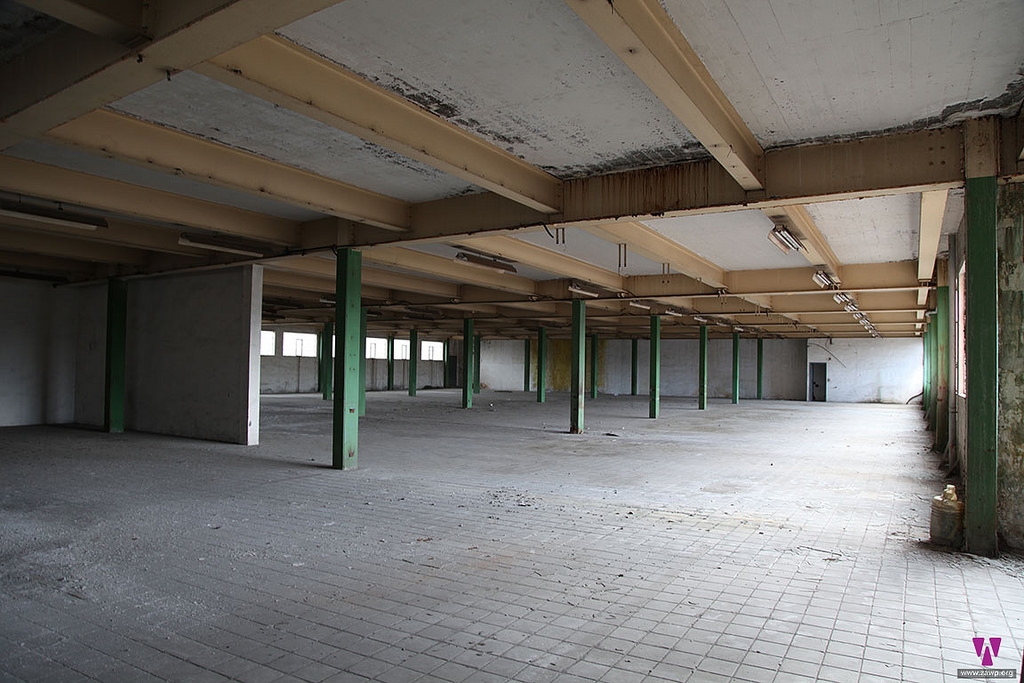
Part of Beta is property of the Bilbao's Council, another part of the Basque Government. The public part is usually used to construction and storage. As the same time exists another building behind there, known as Beta and which belongs to the original factory and to the family. Beta was, years ago, a bolt factory. It used to have an amazing garden in the roof. For the new urban plan, the Beta building will save its life, because of its architectonic value, and will be entirely redesigned. In that new building will be located the Centro Vasco de Matemáticas Aplicadas.
- El centro vasco de Matemáticas tendrá su sede definitiva en Zorrozaurre (12/04/11)
- Fuera de la fábrica Beta
- En marcha la reforma de uno de los edificios industriales emblemáticos
Electromecánicas Consonni (electromechanics) was created in 1953. Before its independance it was part of a company that gathered this and consonni Thermoelectrics, also located in Ribera de Deusto for years.
In 1976-1977 the company moved to Zorrozaurre, occupying a building that was before used by a glass-tubing company.
Electromecánicas Consonni still produces electrical panels of low and medium voltage in the neighborhood.
Its Administrative Director, Javier Elorriaga, tells in the interview that since his arrival to the neighborhood in 1975, the reality of La Ribera has completely changed; decades ago, more than 2500-3000 workers went through the neighborhood and bars and restaurants served all of them, trucks and buses roamed the streets... Little by little the big companies disappeared, and small workshops arised. As time went by these also closed their doors leaving a totally different picture.
Javier also talks about the feeling of uncertainty caused by the Urban Plan.
(more…)
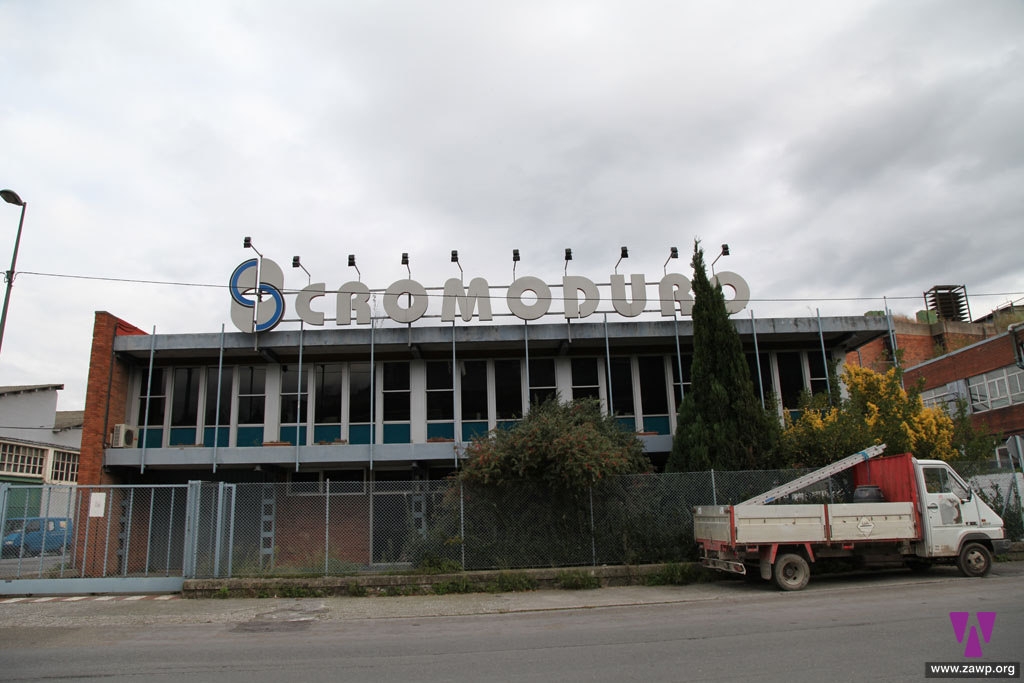
Cromoduro has its origin in the family business Aplicaciones Industriales del Cromo Duro S.A.(Limited Company). Founded in 1953 by Juan Retolaza, its main area of activity was the automotive industry.
Over the years the volume of business and personnel grew until forming the Cromoduro Corporation, which clusters a group of companies that provide comprehensive solutions in the automotive sector (Cromoduro diversificación S.L., Aplicaciones Industriales del Cromoduro S.A., Cromoduro Barcelona S.L., Cromoduro Plásticos S.A. and Cromoduro FMI).
Some of the parts produced by the company today (Formula 1 engine liners and parts for doors, gearshifts, safety arches or soundproofing elements) have been homogenized in such a way that the profit margin is lower if they are manufactured in the Basque country. As a result of this the company started to open production plants in Morocco.
(more…)
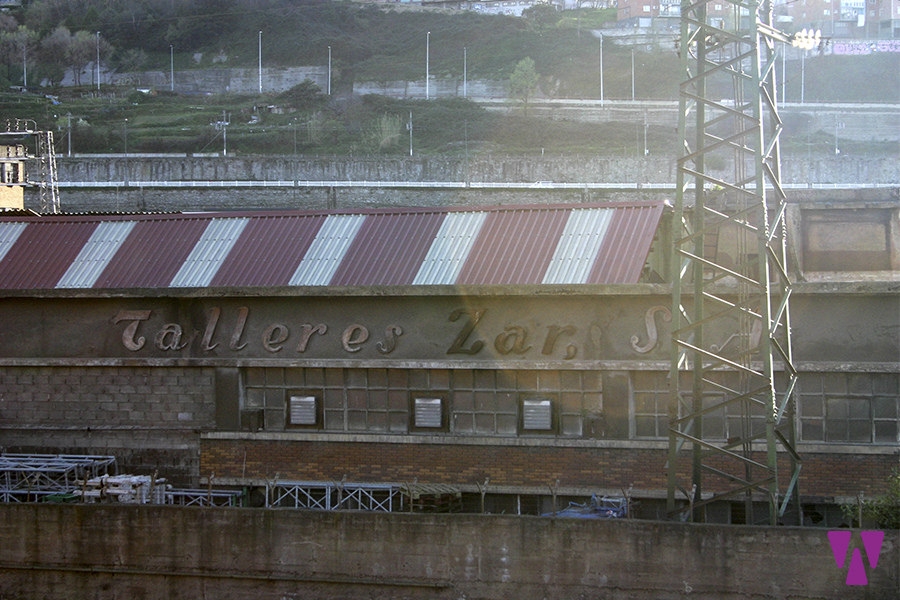
Until its transfer to Zorrozaurre in 1954, this company dedicated to the manufacture of tubes, was located in Villabaso street, near the Termibus bus station.
(more…)
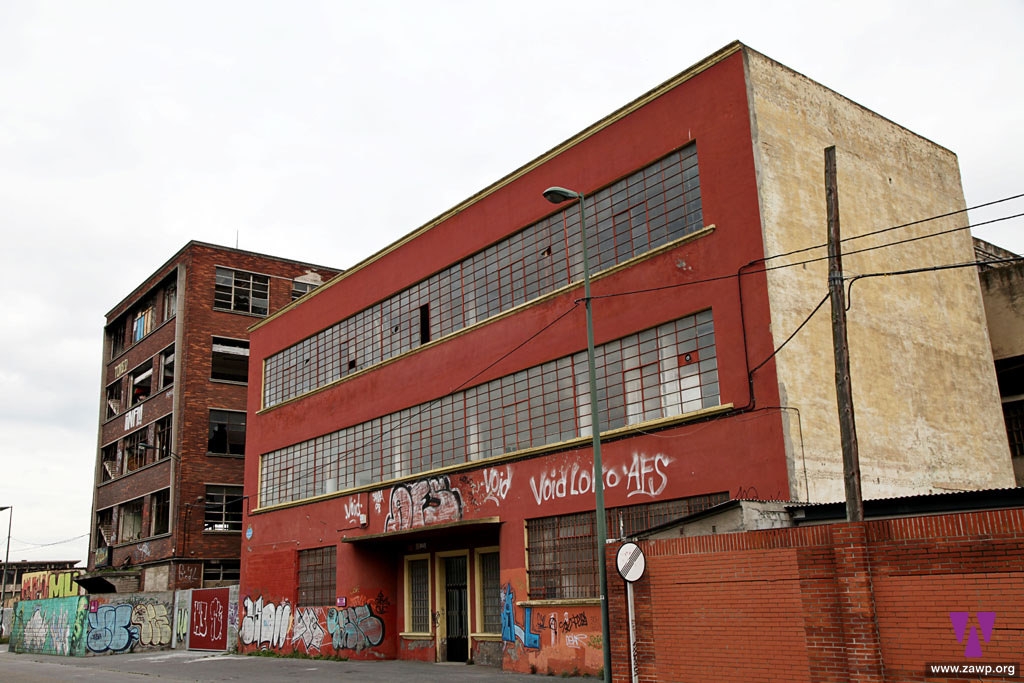
The builfing from Termoelectricidad Consonni (Thermoelectricity) was built in 1957, where this Limited Company produced electrical resistances for decades.
In recent years the pavilion has been used as a warehouse for different types of old industrial machinery, so in 2013 it was inaugurated as "Heritage Center of Industrial Work Culture", changing its original name to Konsoni Lantegia.
This is one of the industrial buildings that will remain after the reconversion of the neighborhoods of Ribera de Deusto and Zorrozaurre through the urban plan.
(more…)
Elorriaga Industria Eléctrica S.A. "Lancor" was founded in Bilbao in 1943. Since its establishment, the company was dedicated to the supply of high quality electric machines, specializing later in the electric motor sector for elevators.
With the change of century Lancor 2000 S.L. moved from its old factory in Ribera de Zorrozaurre, where it was based since 1958, to more modern facilities located in El Campillo polygon (Gallarta, Biscay). From there the company works to export the products it produces to elevators in all countries. Lancor 2000 S.L. has been one of the driving forces of the evolution of the sector since the generalization of the use of elevators, in the middle of the last century.
Two workers of the company remember that, while it was located in Zorrozaurre, many of them used the boats to reach the peninsula and the talk about the queues formed there due to the high number of people working in the workshops in the area.
Around 2003-2004 the company sold the land it occupied in La Ribera, about 14,025 square meters. In October 2008, three buildings that in the past housed the company Elorriaga Industrias Eléctricas S.A. (Lancor) were demolished.
The conservation of the old Lancor office building is contemplated after the intervention of the urban Plan.
(more…)
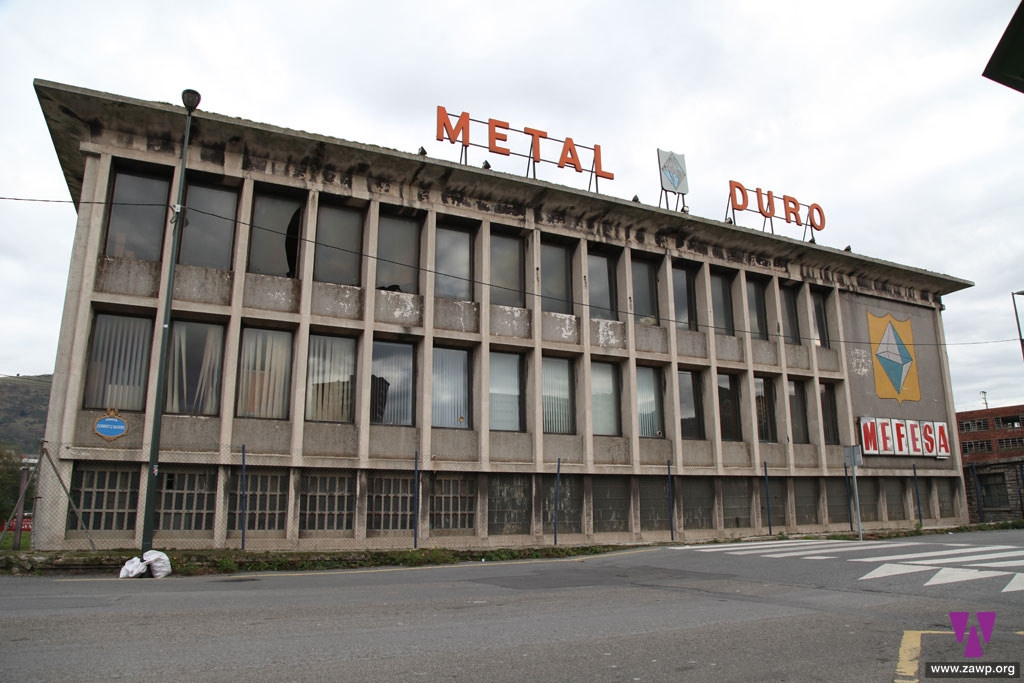
The company, whose origin dates approximately from 1930, established its headquarters in Bilbao in 1949.
In 1994 Metalúrgica y Ferroaleaciones Especiales Sociedad Anónima (MEFESA) changed its name to Fabricación de Metales Duros - FMD Carbide. The company is dedicated to the manufacture of pieces of hard metal, a mixed material composed of Wolfram Carbide and Cobalt. This is a very resistant material used for the manufacture of tools that require an extreme quality in the production processes.
Although it developed its activity in Zorrotzaurre for a long time, the company moved to Basauri around 2016.
(more…)
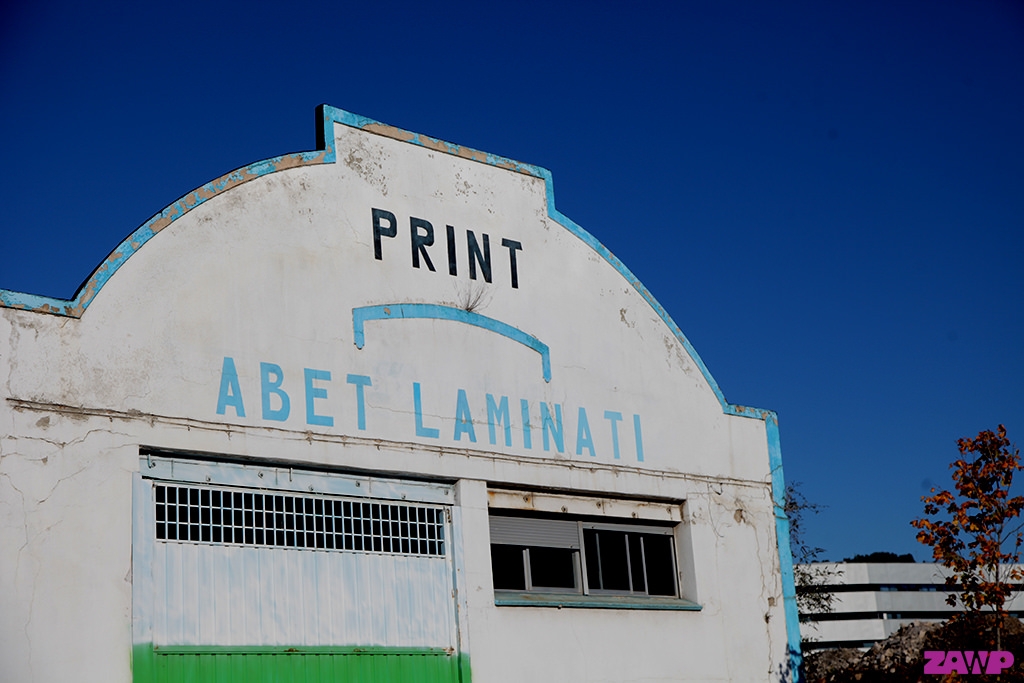
The most antique industrial building in the area was the one occupied by Abet Laminati, built in 1907.
This building, related to the naval industry, even had its own crane and a small dike. Over time the owners changed and in this process, Abet Laminati was the latest company in occupying the building. In recent years the company moved its headquarters in Bilbao to another place and left the space empty as part of the landscape of La Ribera.
After more than 100 years of history, the building was demolished in November 2016 noviembre de 2016; the Urban Master Plan has led to the disappearance of the oldest industrial building on the island.
(more…)
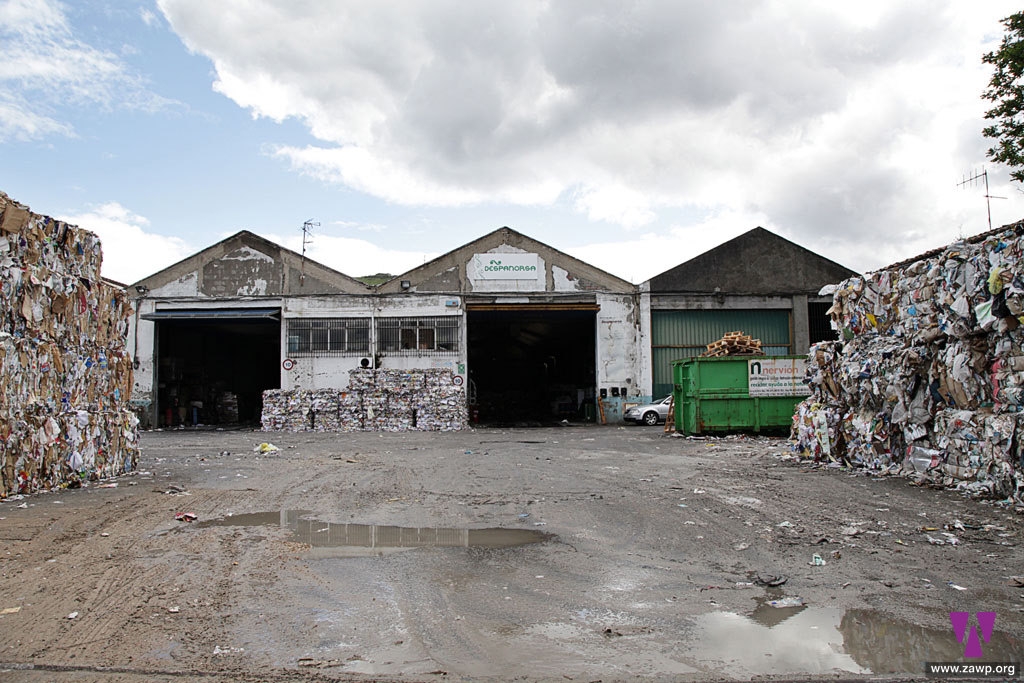
Papeles Nervión was established in 1980 and was located for years at the number 45 of Ribera de Zorrozaurre. The company was dedicated to the recycling, recovery and packaging of paper and cardboard and in addition to the Ribera, it also had centers in Amorebieta (Biscay) and Cantabria.
In 2008, the waste management company Despanorsa (Desperdicios de papel del Norte, S.L.) absorbed Papeles Nervión. The 100-150 people who formed the staff of Papeles Nervión were maintained after the merger operation, and the group went on to manage around 500,000 tons a year. Despanorsa belongs to the paper group SAICA (Spain) and Newark San Andrés (USA) and is a leader in Waste Management for private companies and public bodies in the North of Spain. Its recycling technology consists of sorting, cleaning, baling and selling, as different products such as paper-cardboard and plastic bales, pallets, bulk scrap or textiles are produced.
The building used for years by Papeles Nervión, built in 1950, was demolished in 2018.
(more…)
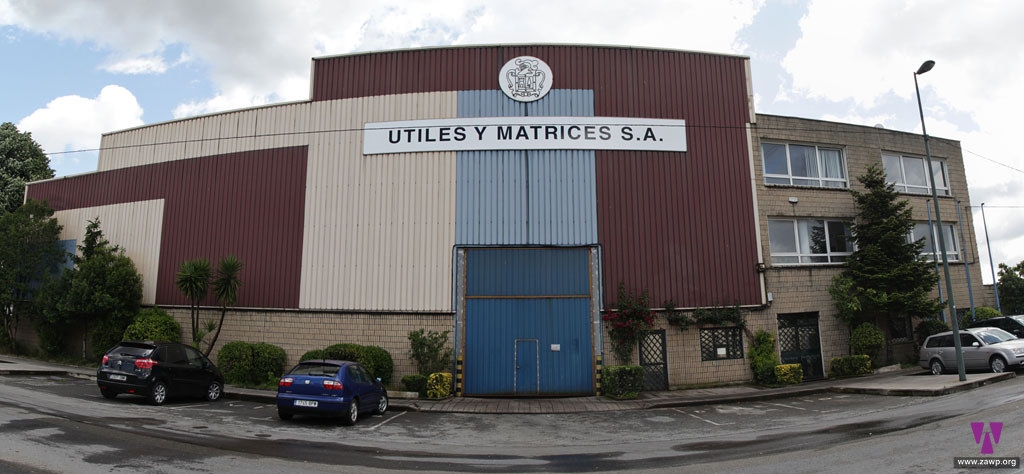
Matricería Nervión was created in 1981 to manufacture all kinds of tools for metal work (molds, matrixes and dies among others), mainly for the automotive sector, although later it began to work also for the aeronautical sector.
In April 2009, 102 workers of Matricería Nervión went on a week strike in protest against the layoff presented by the company. This entailed the dismissal of 14 employees, five of them union delegates. The Industry Federation backed the strike and demanded that the direction of Matricería Nervión "immediately withdraw a file as arbitrary as bizarre". Three of the delegates affected by the layoff have resolutions in their favor issued by the Labor Inspectorate for trade union harassment. The management tried to make the staff commit to work an hour and a quarter more every day, almost 300 hours more at the end of the year. In June 2009, Macrería Nervión entered into voluntary bankruptcy. In 2013 it changed its name to Útiles Matrices S.A.
The building occupied by the company was demolished in 2018.
(more…)
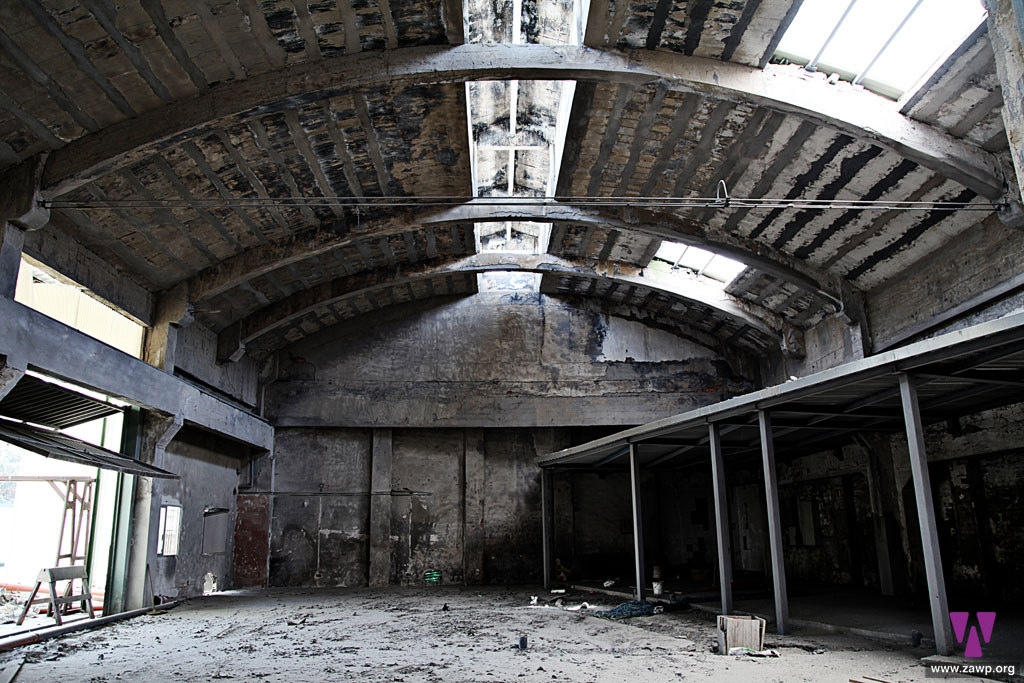
The building known today as Papelera (spanish for Paper factory) was built in 1958 by Industrias Taibo. The company, dedicated to iron, moved to this building of Ribera de Deusto probably after its primitive factory was affected by the works in the canal. After Taibo industries, the building was occupied by Papelera Nervión paper factory, property of the Arzoz family. This was the last company that used the space, after which it remained empty for years.
ZAWP began to enter into conversations with the owners of the building and with the institutions to try to find a way for its conservation and recovery, since it was out of planning.
In 2012 as result of the work in collaboration with the Basque Industrial Heritage Association, the building was classified as public equipment within the Zorrozaurre Special Plan. In 2018 it was published that it would serve as the headquarters of Kunsthal Design Center.
(more…)
Until 2013 there was still a company in La Ribera de Deuto dedicated to the construction of boats. Pilpilka, and its owner Pedro Murelaga, accompanied the neighborhood for years from its premises in Sagardui Street next to the premises of Vicinay Cadenas.
(more…)
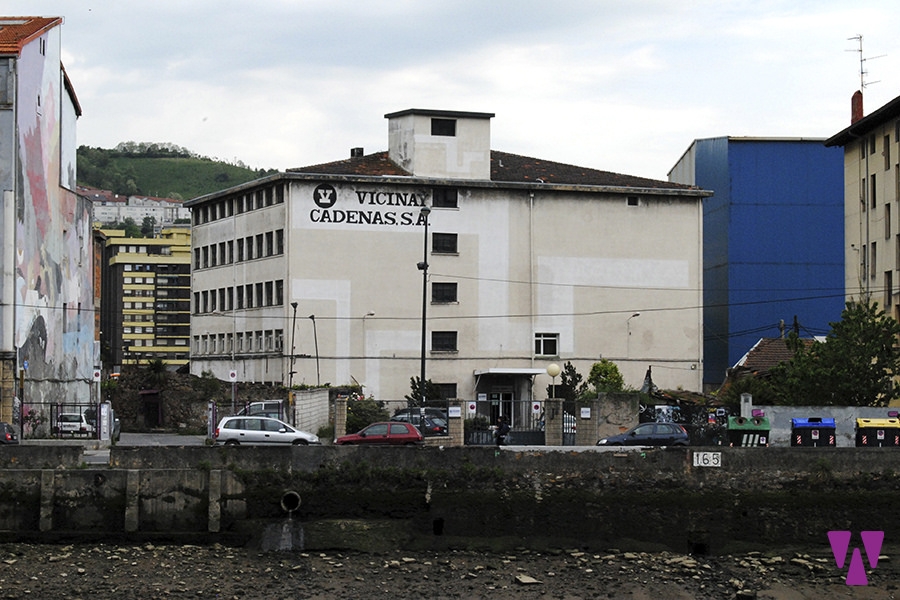
Vicinay Cadenas S.A. is a company of family origin born in Otxandio (Bizkaia) more than 200 years ago. In 1929, almost from the beginning of his career, he settled in La Ribera de Deusto, managing to form over the years the broadest industrial space in the area, made up of several pavilions.
Since 1957 the company starts to settle in European countries such as the United Kingdom and Norway, and begins to export to the United States, Brazil, China, Singapore or Malaysia among others. Since the mid 90s Vicinay has been at the forefront of manufacturing chains for the oil industry. The chain that Vicinay produces is continuous; there are no cracks or cuts between the links but they are hot-bonded so that it is impossible to break or separate them.
Approximately in 2014, Vicinay Cadenas began its progressive transfer, opening several branches and moving its production center to a new plant in Sestao. Most of the pavilions that made up the space occupied by the company were demolished in 2018. That same year, the neighbors began to use the former company's office building as a socio-cultural space under the name Bizinahi.
This is one of the buildings preserved within the Master Plan, and intended to be the headquarters of Tknika, a center for applied research and innovation in professional training.
Vicinay Cadenas is still present in La Ribera de Deusto, occupying the Coromina building.
(more…)

In the 40s the grandfather of a generation that is still living in La Ribera de Deusto founded a small carpentry workshop with his 3 children and some workers. Years later, he establishes the first sawmill at number 47 of the Ribera de Deusto.
For years the company imports wood from Guinea and other countries to cut it and generate different products. Hardwood is cut to make planks and softwood is used to make plywood. Later this is used both to make furniture and barrels as for ship partitions.
After the plywood, the import of wood goes down, so the sawmill begins to work the chipboard, which is created by compacting sawdust.
Over time, new products appear in the market, so the demand for wood declines and the sawmill is forced to produce many products in order to continue competing with foreign companies. Production declines and the sawmill closes around 93.
After the closure of the company, the large space occupied by the Sawmill is divided, giving rise to several smaller pavilions that are rented to mechanical workshops, carpentry, or blacksmiths among others.
As of 2010, some of these buildings become places for culture and creativity thanks to ZAWP project.
Some of these buildings disappear in 2019 due to the progress of the urban plan.
(more…)
When Serrería Fernández (sawmill) ceased its activity, its large space was divided into smaller workshops. At that time Molsa occupied one of them, the one that would later be known as Garabia Aretoa.
Molsa (Mol S.L.) built brakes, slip ring collectors and other parts for port cranes in La Ribera de Deusto until it moved its activity to Asua.
Cipriano, a former workshop worker, says that they used the crane that gave name to the cultural space (Garabia) to climb to the roof. In his visit to the neighborhood 20 years after leaving, he also remembers the amount of people that used to be in the area before.
This is one of the industrial buildings that is conserved within the Master Plan as public equipment for cultural use.
(more…)
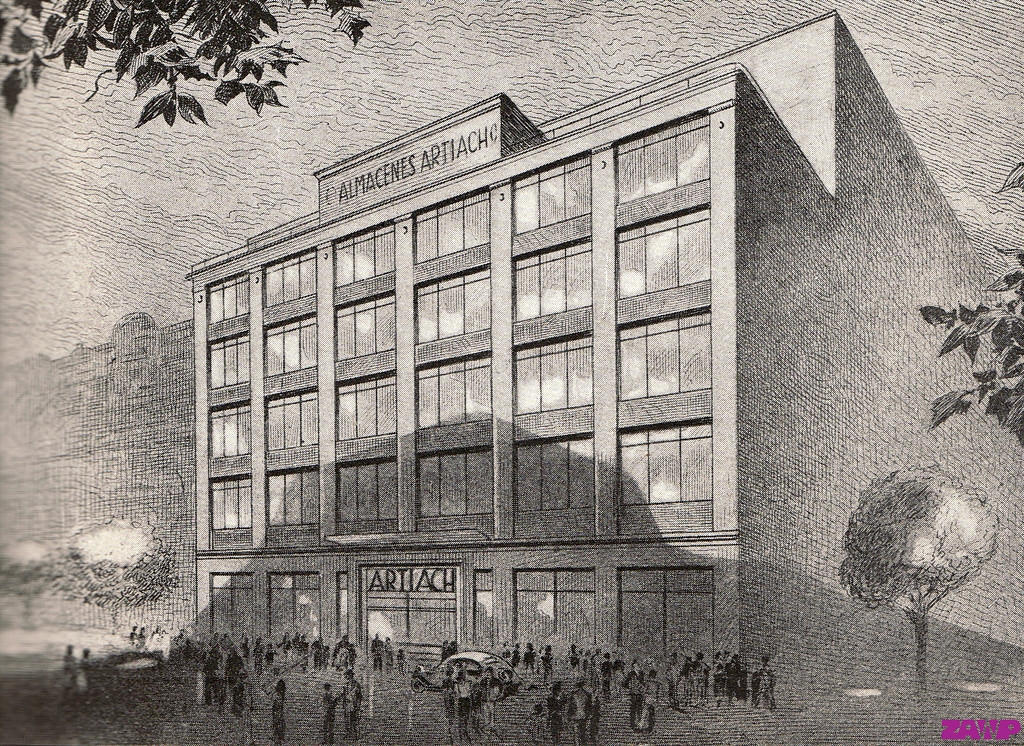
This building was the first one designed and built to be a biscuit factory in Spain. Its designer was the engineer of the same family José Artiach Gárate.
In 1923 the factory had 67 people on staff, 55 of them were women.They received between 3 and 9 pesetas per day depending on their specialization. In 1924, with 88 workers (63 women), they established a shift system with which they manufactured 18 tons a day, double than until that date. In the 40s there were 600 people working at Artiach. In the 70s the factory experienced a period of splendor in its plant of Ribera de Deusto, reaching up to 800 people. Manufacturing, although industrial, needed a lot of labor.
Later Artiach was divided into different premises being occupied by different owners such as Comercil Férrica S.A.
Since 2012 the building has hosted several cultural projects.
The urban plan of Zorrozaurre contemplates the conservation of part of this industrial building.
(more…)
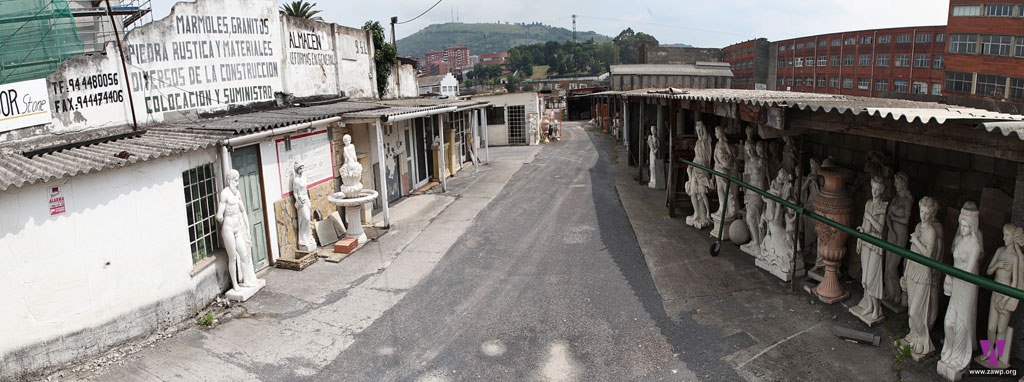
Mármoles Arteaga was founded in 2005. Since then it has been dedicated to manipulation processes related to natural stones such as marble or granite.
This limited company was liquidated in 2012, although it is still possible to see some of its materials and creations in this space of La Ribera.
(more…)
